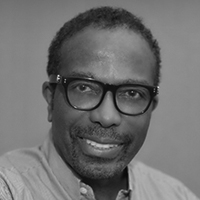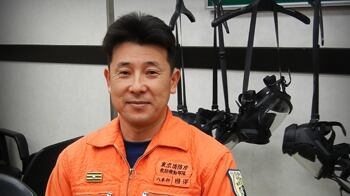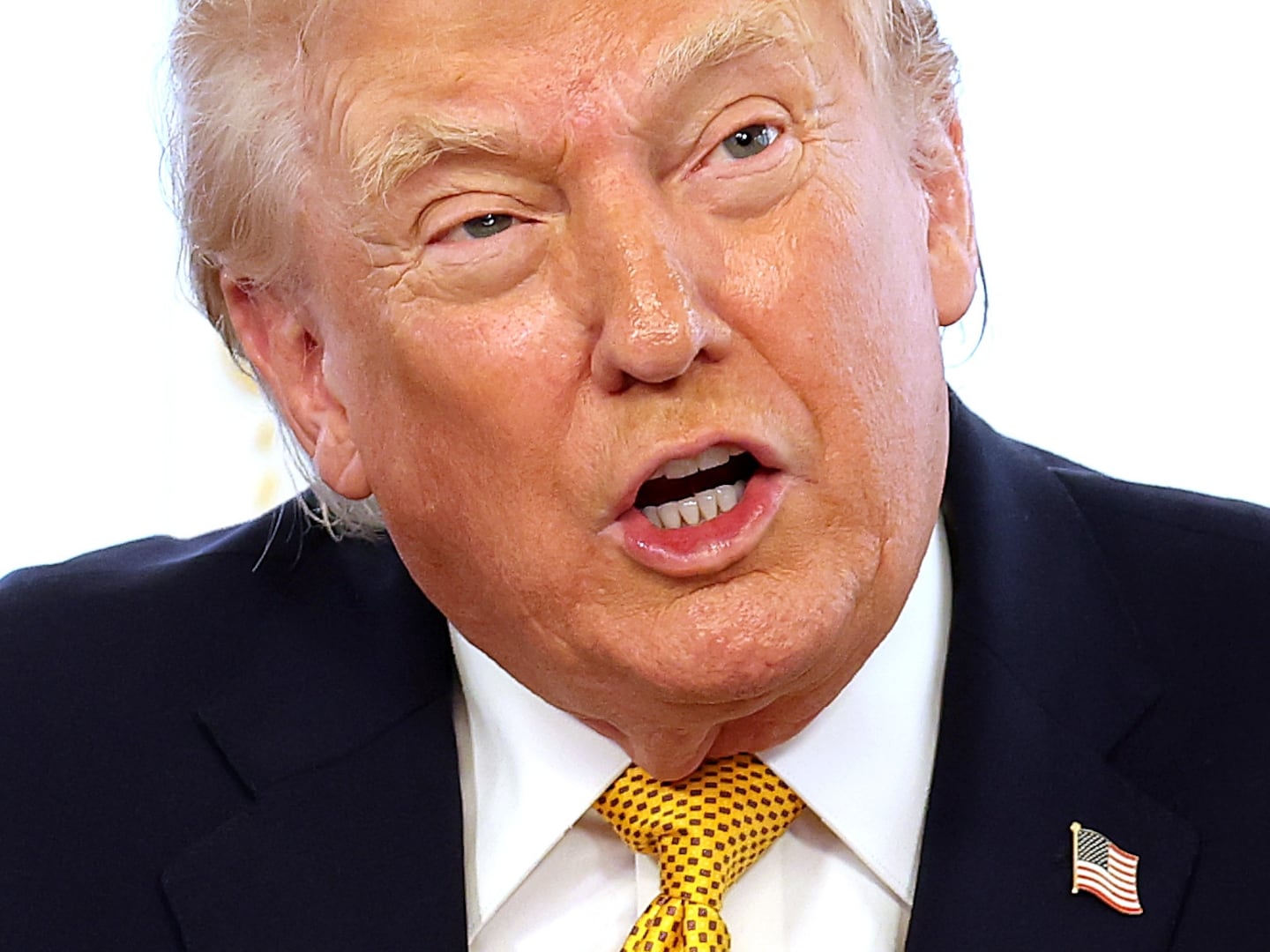Ken'ichi Kunisawa and his fellow firefighters braved boiling nuclear reactors for more than 13 hours. He talks to Lennox Samuels about radiation fears and why this wasn't a kamikaze mission.
Watching television images of reactors at the Fukushima Daiichi nuclear plant smoking and exploding en route to a possible meltdown, Ken'ichi Kunisawa knew he would be joining the battle to end Japan's worst crisis since the Second World War. Now, almost two weeks after he and his team rushed to help cool down the overheating plant, the Tokyo firefighter remembers getting as close as six feet to the radiation-spewing reactors, acknowledges that he will have to be checked for contamination for months to come—and almost cheerfully says he would do it again.

"It would be a lie if we say we did not feel the fear," says the 41-year-old father of three as he chats amiably in a conference room at the Tokyo Hyper Rescue Squad offices in the Tokyo suburb of Tachikawa. "We focused on doing our duty. We had been trained to do so. If they asked me, I'd be glad to go back there." And he says his was no suicide assignment. "Our safety was secured through skills and technology," he insists. "This is not a story about kamikaze."
The call came the night of March 17, six days after a 9.0-magnitude earthquake launched a chain of events that has so far left almost 28,000 people dead or missing, and driven Japan to the nuclear precipice. The caller was Kunisawa's boss: Authorities were dumping tons of water on the reactors using helicopters, and Tokyo Fire Department brass wanted firefighters to join the effort by spraying water from the ground. "We knew that the call might be coming that day and we did training for that," Kunisawa says. "We showed the department head that we could do this spraying-water operation. Then we went home, and later got the call."
It wasn't a particularly eventful night-before for Kunisawa, the squad's deputy commander. Like the other men, he felt a little tense, but there were no nightmares, no what-ifs. "We firefighters, even if we feel fear, we never show it to the others. We have high morale and were resolved to accomplish the duty. We only think how to accomplish our duty—even when we are afraid to do it." And, he added wryly, "When I heard that the operation was to spray water to the reactors, I felt that we were the right people to do it. We are good at spraying water." His wife, Tomomi, tried to be stoic. "She did not want me to go, of course, but did not say so. She is the wife of a firefighter, and understands what we do every day. I have never heard of any wife that complained or said, 'Please do not go.' "
“I admit we had concerns about [reactor No. 3], but we’d been trained to do this. That’s how we became members of a special unit. We’re proud of being special guys, like the Green Berets.”
The following day, 32 men from the Tachikawa squad, including Kunisawa, left for Fukushima. A total of 140 firefighters converged on the stricken plant, where four of six reactors, including the troublesome Unit No. 3—which was to take on almost mythic status in the days ahead—were crippled in some way, with the remaining two, Nos. 5 and 6, fitfully showing symptoms of rising pressure. Kunisawa's squad took along two firetrucks. They rushed to the site, taking the time to execute one more simulation nearby, making sure all equipment was working well. The mission to cool down the reactors began in earnest on the 19th.
The men donned thin protection suits against radiation contamination on top of their regular uniforms, and flame-retardant firefighting suits over those—to reduce the risk of tearing the anti-radiation gear.
As they pulled up, the scene was as it had appeared on TV to millions day after day—debris strewn around, smoke billowing about, the reactors sitting stolidly—and dangerously—near the edge of the Pacific Ocean.
"We tried to reach to the reactors, but could not because of the rubble left by the explosion of the building [in which reactors are situated]. Then we changed our original plan, and tried to go again," Kunisawa says. But the men could not extend a fire hose by simply dropping it from a truck; there was too much debris around. So they did it manually—unfurling the 164-foot, 220-pound hose and carrying it on their shoulders. They got started around 11 p.m.
At the compound they quickly divided into four groups. Group 1 pumped the seawater that workers had been using for days, after the earthquake and ensuing tsunami crippled the water-supply system. Group 2 looked after the firetrucks. Group 3 connected the hose from the sea to the truck. Group 4's job was to keep all the firefighters safe as best they could.
The firemen found they also had to manually install the pump that would deliver water from the sea. A crane usually performs such tasks but this time debris limited its ability to maneuver.
"We pumped up water from the sea and sprayed water from the truck," Kunisawa recalls. All the men worked 30-minute shifts to minimize the risk from radiation. "The radiation was too high," says the 18-year veteran. "There is the maximum level of radiation that you could receive for life. So were constantly moving. The safety team checked the level of radiation that the firefighters got exposed to, and picked up some people by turns. We had to get off the site in 30 minutes and neutralize ourselves. Then we went back to the site again."
The safety unit used meters to check the men's radiation levels—the limit was 80 millisieverts per hour—but each firefighter had his own Geiger counter attached to his wrist. "For some people the Geiger counter is alarming," Kunisawa says, "if it goes off." He added: "If it reached a certain level, workers had to step out and undergo neutralizing procedures. We found radiation was different depending on what spot you're in. There were areas where radiation was critically high—around Units 1 and 2. If there's a concrete wall, you're more protected, so we were checking radiation levels at each different place. And we had to keep wearing the masks all the time."
Those masks, curiously, were in some ways a bigger challenge than worrying about radiation. "That was kind of painful," Kunisawa says, laughing. "And I have hay fever, too! So I had a runny nose to deal with as well. Most of my guys were battling hay fever and runny noses and tearing-up, so that was kind of agonizing."
As they went about their work, the men even came close to the notorious Unit 3. The boiling-water reactor has been hit with multiple problems: a damaged pressure vessel, contaminated water, an exposed core caused by plummeting water levels, and an explosion on March 14. "We knew that No. 3 was the reactor that was having the most problems," Kunisawa says, smiling ruefully. "I admit we had concerns about that, but we'd been trained to do this. That's how we became members of a special unit. We're proud of being special guys, like the Green Berets."
Kunisawa describes the scene as hectic, yet under control. "We had to decide so many things at the site. Things were changing all the time. There was a lot of commotion and people were yelling at each other, to be heard. But the older members over 40 took charge and things went OK. We were basically cool. Our minds were on the job and we didn't really feel fear. We didn't have time for that."
The task for Kunisawa and the other men—he was in the group pumping seawater—was to fill the pool inside a reactor containment building where spent fuel is cooled. The firefighters did this while Tokyo Electric Power Company workers were trying to restore power to the reactors. "We knew 700 workers were working to cool the reactors, but I couldn't see them and couldn't tell exactly what they were doing," he says. "There was no power and no lights. I imagine it was so hard for the TEPCO guys to work without power and in the dark. We had some lights from our trucks and brought our own lights and TEPCO prepared some lighting devices. It was harder for them."
For 13 and a half hours straight—with their 30-minute rotations—Kunisawa's team sprayed water using a spraying machine, refueling their firetruck along the way. They left the site at 9 the next morning. "They say after a disaster people have 72 hours under debris to survive," Kunisawa says. "We've been trained to work 72 hours straight, so 13 hours was kind of nothing."
Was the mission successful? "We sprayed enough water [up to 2,400 tons] to fill the pool, so it must have been filled, but we could not check," Kunisawa says. "It was supposed to be a success, but we couldn't see what was happening inside the building."
The next day, Kunisawa and the others were checked again for radiation. Authorities tested their blood and urine. Everything was all right. "No one feels ill at the moment. They'll check that continually for a while," he explains.
How high was the risk? "We all knew it," the firefighter says. "The Tokyo Fire Department has a special unit for dealing with nuclear, biohazard, and chemical disasters. They lower the risk of the firefighters. Without them, we would not have been there."
And Kunisawa has little use for talk of firefighters as heroes. "All the people around me, family and friends, bosses, co-workers, showed us appreciation, and said, 'Thank you very much.' But I do not think that I did something heroic. I am surprised at how much people reacted to this operation. We always do the duty on fire and rescue; this time it was the nuclear reactors. Not only firefighters are working at the site, but TEPCO workers and Self Defense Forces are also working hard there."
He says he does consider the TEPCO workers heroes. "They are working really hard. It is more like protecting their own family than just protecting the workplace. I really appreciate them."
Even if Kunisawa had notions of his own heroism, sources close to home would tamp those down. He has two daughters, 16 and 12, and an 11-year-old-son. "I said to them, 'Your daddy is great, huh? Why don't you brag about father?' But my kids were like 'Dad, my friends don't know much about you. They aren't even interested in that.' "
Kunisawa is concerned, though, about some reports claiming that plant workers and firefighters went on suicide missions at Fukushima Daiichi. "This is not a suicide mission. I do not want to do anything that makes my lovely wife and children worry."
The crisis at Fukushima has gotten Kunisawa thinking about nuclear power plants. "It has changed my thought a lot," he says. "There used to be a 'safety myth' about nuclear plants, and I had an image that nuclear plants were safe, clean and low-cost. But now I realize that nothing is perfect."
— With Toshiyuki Chiku
Lennox Samuels is a Newsweek/Daily Beast editor based in Bangkok. He covered the 2004 Indian Ocean tsunami.






